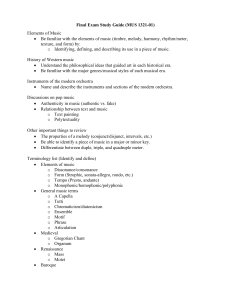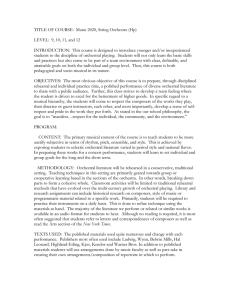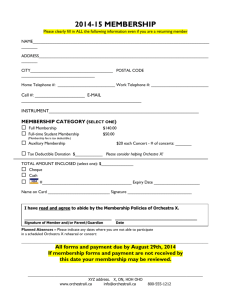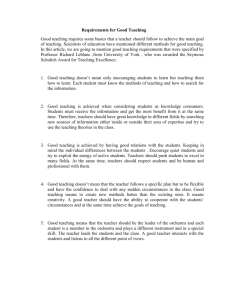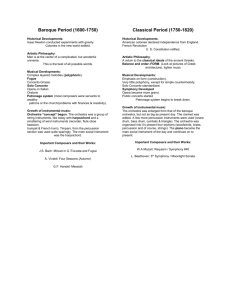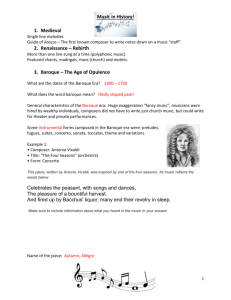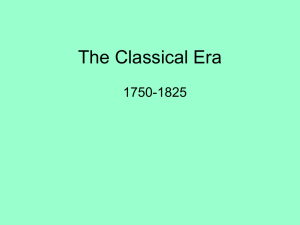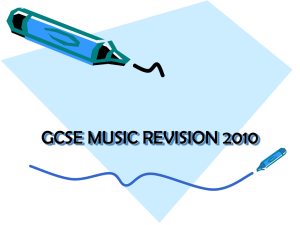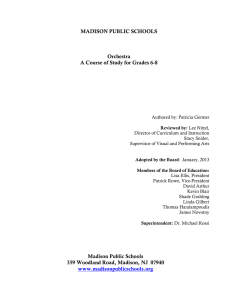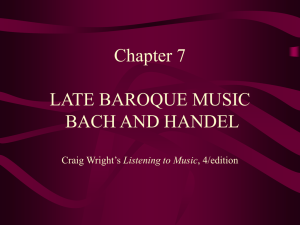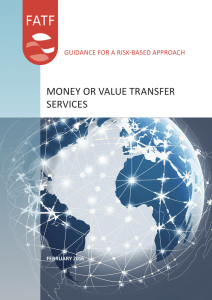Forms and Styles of Music
advertisement
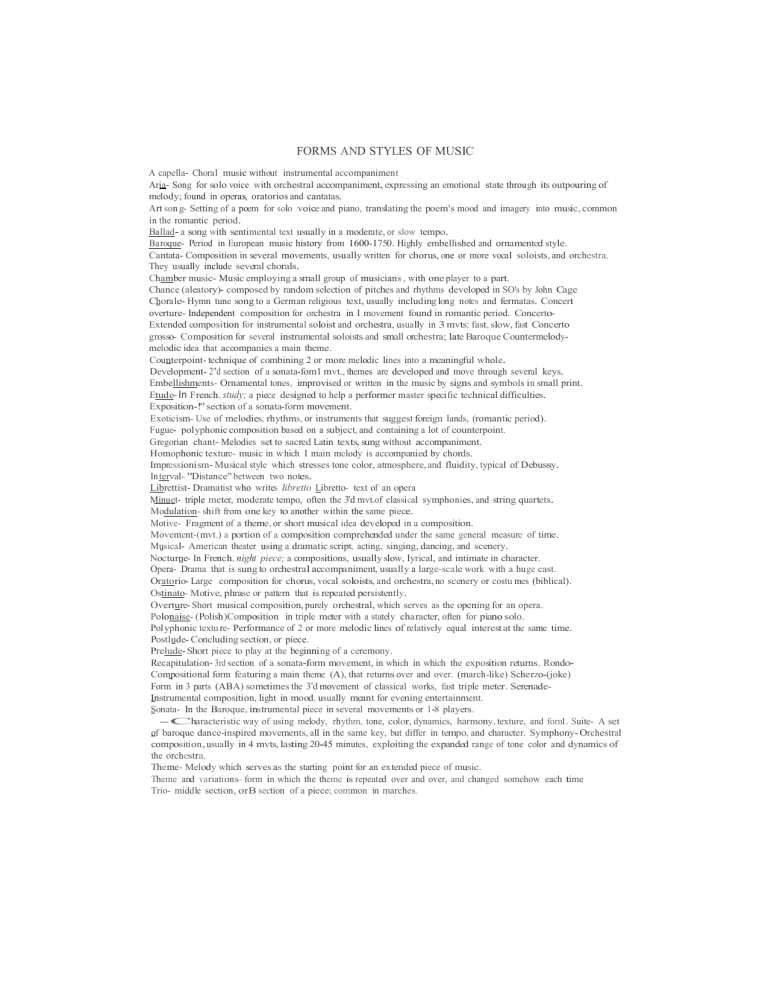
FORMS AND STYLES OF MUSIC A capella- Choral music without instrumental accompaniment Aria- Song for solo voice with orchestral accompaniment, expressing an emotional state through its outpouring of melody; found in operas, oratorios and cantatas. Art son g- Setting of a poem for solo voice and piano, translating the poem's mood and imagery into music, common in the romantic period. Ballad- a song with sentimental text usually in a moderate, or slow tempo. Ba roque- Period in European music history from 1600-1750. Highly embellished and ornamented style. Cantata- Composition in several movements, usually written for chorus, one or more vocal soloists, and orchestra. They usually include several chorals. Chamber music- Music employing a small group of musicians , with one player to a part. Chance (aleatory)- composed by random selection of pitches and rhythms developed in SO's by John Cage Chora le- Hymn tune song to a German religious text, usually including long notes and fermatas. Concert overture- Independent composition for orchestra in I movement found in romantic period. ConcertoExtended composition for instrumental soloist and orchestra, usually in 3 mvts: fast, slow, fast Concerto grosso- Composition for several instrumental soloists and small orchestra; late Baroque Countermelodymelodic idea that accompanies a main theme. Counterpoint- technique of combining 2 or more melodic lines into a meaningful whole. Development- 2"d section of a sonata-fom1 mvt., themes are developed and move through several keys. Embellishments- Ornamental tones, improvised or written in the music by signs and symbols in small print. Etude- In French, study; a piece designed to help a performer master specific technical difficulties. Exposition-!" section of a sonata-form movement. Exoticism- Use of melodies, rhythms, or instruments that suggest foreign lands, (romantic period). Fugue- polyphonic composition based on a subject, and containing a lot of counterpoint. Gregorian chant- Melodies set to sacred Latin texts, sung without accompaniment. Homophonic texture- music in w hich I main melody is accompanied by chords. Impressionism- Musical style which stresses tone color, atmosphere, and fluidity, typical of Debussy. In terval- "Distance" between two notes. Librettist- Dramatist who writes libretto Libretto- text of an opera Minuet- triple meter, moderate tempo, often the 3'd mvt.of classical symphonies, and string quartets. Modulation- shift from one key to another within the same piece. Motive- Fragment of a theme, or short musical idea developed in a composition. Movement-(mvt.) a portion of a composition comprehended under the same general measure of time. Musical- Ameri can theater using a dramatic script, acting, singing, dancing, and scenery. Nocturne- In French, night piece; a compositions, usually slow, lyrical, and intimate in character. Opera- Drama that is sung to orchestral accompa niment, usually a large-scale work with a huge cast. Oratorio- Large composition for chorus, vocal soloists, and orchestra, no scenery or costu mes (biblical). Ostinato- Motive, phrase or pattern that is repeated persistently. Overture- Short musical composition, purely orchestral, which serves as the opening for an opera. Polonaise- (Polish)Composition in triple meter with a stately character, often for piano solo. Polyphonic textu re- Performance of 2 or more melodic lines of relatively equal interest at the same time. Postlude- Concluding section, or piece. Prelude- Short piece to play at the beginning of a ceremony. Recapitulation- 3rd section of a sonata-form movement, in which in which the exposition returns. RondoCompositional form featuring a main theme (A), that returns over and over. (march-like) Scherzo-(joke) Form in 3 parts (ABA) sometimes the 3'd movement of classical works, fast tri ple meter. SerenadeInstrumental composition, light in mood, usually meant for evening entertainment. Sonata- In the Baroque, instrumental piece in several movements or 1-8 players. -Characteristic way of using melody, rhythm, tone, color, dynamics, harmony, texture, and forn1. Suite- A set of baroque dance-inspired movements, all in the same key, but differ in tempo, and character. Symphony- Orchestral compositi on, usually in 4 mvts, lasting 20-45 minutes, exploiting the expanded range of tone color and dynamics of the orchestra. Theme- Melody which serves as the starting point for an extended piece of music. Theme and variati ons- form in which the theme is repeated over and over, and changed somehow each time Trio- middle section, orB section of a piece; common in marches.
